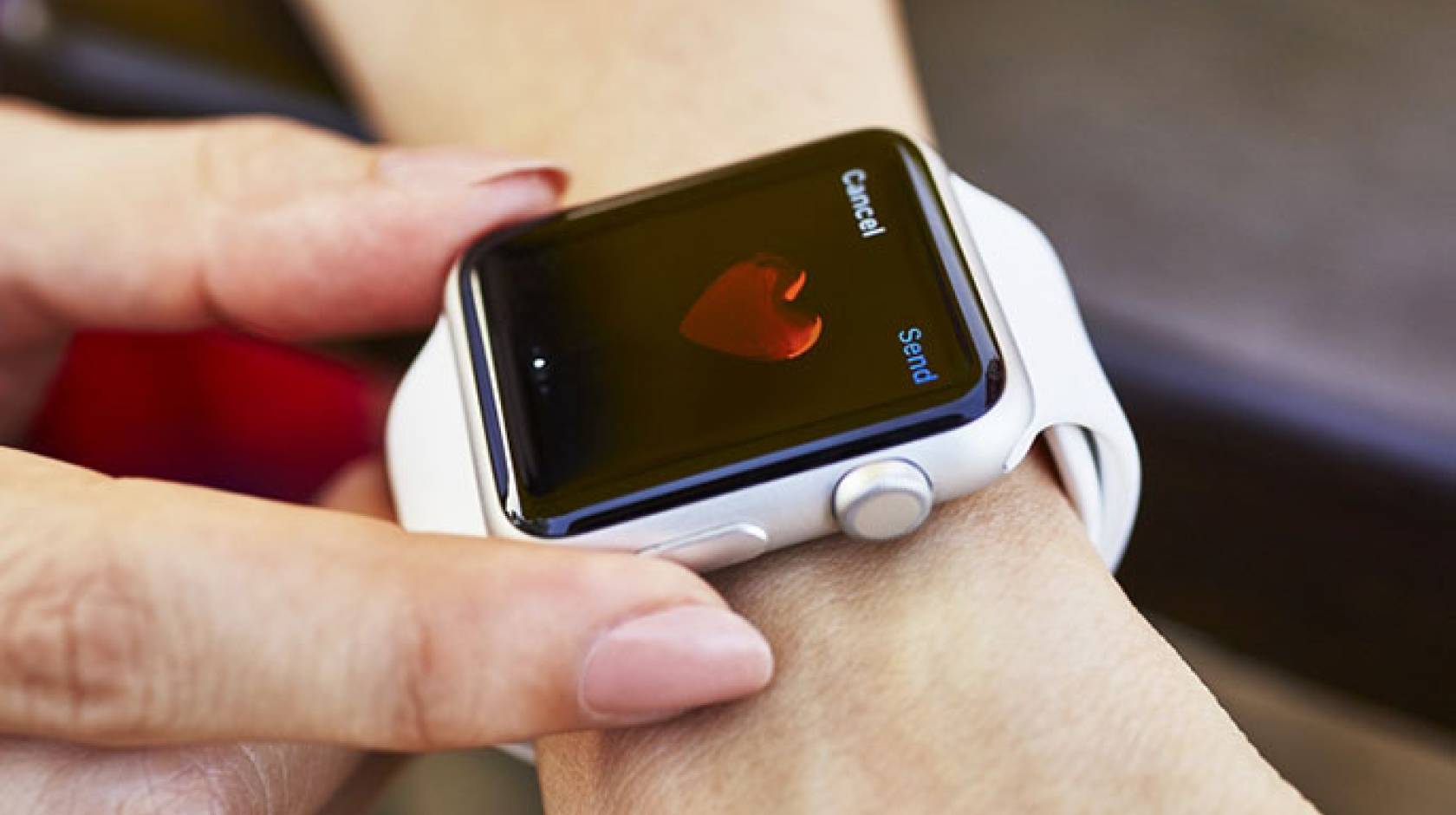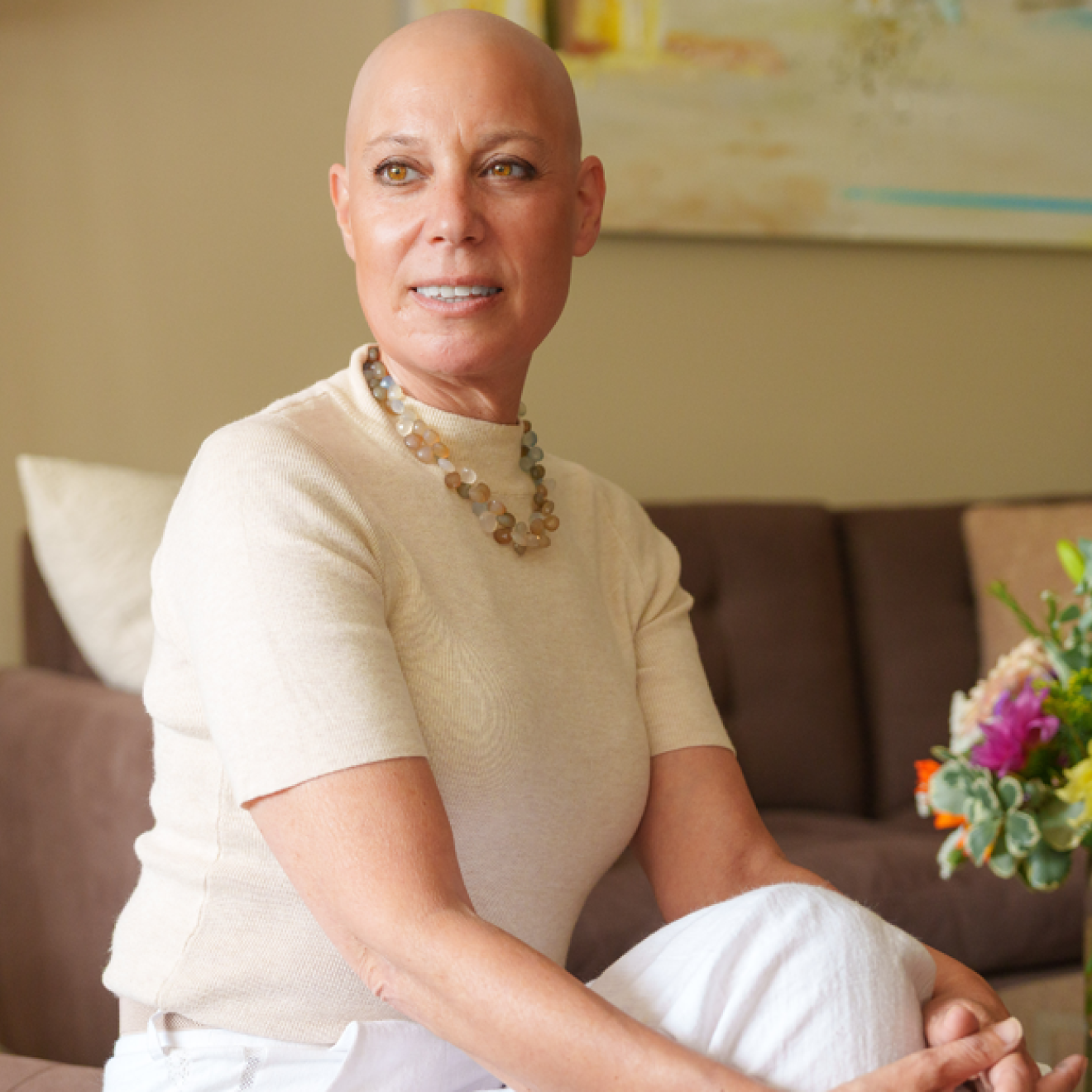Sukee Bennett, UCSF

For years, Kathi Sigona felt like she had “a chest full of writhing worms in a bag.”
The 57-year-old middle school principal also tired easily, but multiple visits to the doctor had found no heart trouble.
Then, 12 years ago, Sigona was at her doctor’s office in Modesto, Calif., for a colonoscopy when her doctor noticed something was wrong with her heartbeat.
This time, her doctor asked Sigona if she had atrial fibrillation, a term she had never heard of. Atrial fibrillation, or AFib, is an irregular and often rapid heart rate that can increase the risk of dangerous cardiovascular events — but the symptoms come and go, leaving many patients and their doctors in the dark.
The doctor told her, “We’re not doing the procedure today. You’re going to the emergency room,” Sigona remembers.

Credit: Courtesy of Kathi Sigona
Finally diagnosed with AFib, she eventually found relief under the care of UC San Francisco cardiologist Dr. Jeffrey Olgin.
But many people living with heart problems never receive the medical care they need. Office visits offer doctors only a snapshot of chronic conditions.
That’s where new mobile health-tracking technology can make a real difference, providing detailed and long-term health data for each patient.
Such information can help with diagnosis, reveal the triggers of disease, and result in more precise care for patients.
Over the last century, clinical trials and large-scale heart studies have led to vast insight on general heart health and conditions like AFib. Yet we still don’t entirely understand why heart health can suddenly decline, nor why seemingly healthy individuals can suffer a dangerous cardiac episode.
These gaps in knowledge led Olgin and UCSF cardiologist Dr. Gregory Marcus and epidemiologist Dr. Mark Pletcher, MPH, to create the Health eHeart Study, an ambitious online cardiovascular study that aims to recruit 1 million global participants and monitor their heart health online through smartphones and wearables like the Apple Watch, integrating health care into our everyday lives.
All this data may eventually help doctors predict the development and reoccurrence of heart disease – and it also may pave the way for how clinical studies use technology to collect information about other health conditions in the real world.
Technology for continual monitoring

Credit: Susan Merrell
The core of traditional, long-term heart studies — like the decade-long Cardiovascular Health Study and the Framingham Heart Study, which has been running since 1948 — is an annual or bi-annual visit to the doctor’s office to collect data such as pulse and blood pressure.
But this method is full of blind spots; abnormal heart conditions often do not manifest during those brief annual visits. Health eHeart helps fill in the gaps with technology that continually obtains cardiac data from participants in their everyday environments, supplemented with online health surveys.
Dr. Eric Topol, a professor of innovative medicine at Scripps Health in San Diego, who studies the use of digital tools in health care, says it’s important to capture data from people in the real world. “We mainly rely on getting data from people coming into a doctor’s office, and that’s one of the most contrived environments you can imagine.”
As Health eHeart has grown, so too has the technology it depends on. The boom in smartphone use alone has expanded data collection and recruitment. Today, the study uses Apple and Android health apps, Fitbit devices, the Apple Watch, and Bluetooth-enabled blood pressure cuffs and scales. Nearly anyone is a potential study participant.
“We don’t have uniform data collection on everyone, which conventional studies have done,” said Marcus, who holds the Endowed Professorship in Atrial Fibrillation Research at UCSF. “But in order to enroll a sufficient number of people and make it easy to participate, that was implemented intentionally.” That’s because what the study may lack in uniformity, it makes up for in sheer numbers.
Designing new studies

Credit: Noah Berger
Health eHeart now has more than 163,000 consented research participants, representing all 50 U.S. states, over 50 countries and a broad range of ages.
“One concern was that we’d just have a bunch of healthy 20- and 30-year-old participants,” Marcus said. “But the mean age is around 50, and we have participants that are even in their 80s and 90s.”
The large pool of participants means that if the researchers want specific data — say, on cognitive behavioral therapy for exercise motivation — they design and implement a sub-study to collect it. And they can potentially complete recruitment for sub-studies within hours, the researchers said.
Already, the team has published the results from several sub-studies in peer-reviewed journals, exploring links between alcohol perception and alcohol use, secondhand smoke exposure in utero and AFib as an adult, and cell phone use before bed and sleep quality.
The researchers also have experimented with “geofencing” hospitals — if participants spend more than four hours in a hospital, a notification on their smartphone asks if they have been hospitalized.
Tracking hospitalizations is a valuable proof-of-concept study for potential health interventions, Marcus explained. “You can imagine geo-fencing grocery stores, geo-fencing liquor stores, geo-fencing gymnasiums, geo-fencing fast-food restaurants,” he said, “and how messaging might influence visiting those locations to enhance health.”
Among the latest Health eHeart findings is one that may have saved Sigona years of discomfort. Partnering with the company Cardiogram, Marcus and his team found that the heart rate sensor in Apple Watches could detect AFib with 97 percent accuracy.
Studying cardiac events in real time

Credit: Barbara Ries
Enthusiastic participants like Sigona, now 69 and retired, can suggest new study areas and even volunteer to help lead research projects.
She is part of the Health eHeart Alliance, a network of participants dedicated to finding ways for patients to become empowered by health.
In November 2014, the Alliance met with patients and doctors at UCSF to discuss heart health and new research ideas. Sigona’s group, led by Marcus, proposed studying the triggers of AFib episodes.
“Why did I wake up in the middle of the night with AFib?” Sigona wanted to know. “What went on the evening before? Was it too much caffeine? Was it that the dog was barking next door and I couldn’t fall asleep?”
AFib affects more than 2.7 million people in the U.S. and can lead to blood clots, stroke, and heart failure, among other complications. The condition contributes to an estimated 130,000 deaths each year, according to the Centers for Disease Control and Prevention.
The Alliance successfully applied for a grant from the Patient Centered Outcomes Research Institute (PCORI). In the study, the patient serves as both an active participant who is exposed to potential AFib triggers — like alcohol, caffeine, stress or poor sleep — and then a control who eliminates the trigger from his or her daily regime. This setup is especially valuable because every AFib patient is a little different, said Olgin, chief of the Division of Cardiology who holds the Ernest Gallo-Kanu Chatterjee Distinguished Professorship in Clinical Cardiology.
“In conventional research, generally you look at baseline data from one snap-shot in time. For example, on that one day, someone drinks this much alcohol. Then you follow them for a time to see who develops AFib and who doesn’t.” Marcus said. But the immediate influences before an episode have been difficult to capture. The new study aims to better understand how acute or short-term behavior or exposure — measured by nearly continuous assessments — can trigger cardiovascular episodes.
Beyond heart disease
While the core of Health eHeart is cardiac research, the team has far-reaching ambitions: expanding mobile health-based research to other conditions and around the world. The study is built on a platform called Eureka, and the team is hoping to encourage other academic and industrial investigators to adopt the technology.
For researchers, the appeal of Eureka may be the global reach. For many participants, the draw of studies like Health eHeart is the emphasis on community service – the opportunity to improve medicine and help other patients. Participants on the platform will be able to identify causes they’re interested in, such as heart disease or cancer research, and will be invited to participate in studies centered around those causes.
The team is optimistic that Health eHeart will reach its goal of enrolling 1 million patients.
“The good and the bad is that heart disease is so common,” Marcus said. “We’re relying on altruism and for people to be willing to make a meaningful contribution.”

